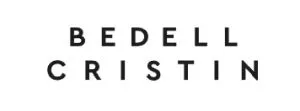For the first time the Royal Court of Jersey has given guidance on the issues facing trustees of trusts who find that they are unable to pay trust liabilities out of trust assets as they fall due, or where the trust liabilities exceed the trust assets. Whilst the Court recognised that it is not technically accurate to describe a trust as insolvent, because a trust is not a legal entity and its property is held by a trustee who is personally responsible (to a greater or lesser extent) for meeting trust liabilities, the concept is helpful for determining the duties of trustees - and indeed may affect the recovery of their fees.
The Z Trust cases
There are three judgments of the Court relating to the ongoing administration of a group of eight inter-connected family trusts (referenced in the relevant anonymised Jersey judgments as the Z Trusts), of which the ZII Trust and the ZIII Trust are insolvent.[1] The judgments raise some interesting and important issues about the impact of insolvency on trust structures, particularly in relation to:
- the duties of trustees in insolvent situations;
- what sort of insolvency regime, if any, should apply;
- the exercise of fiduciary powers in insolvent situations; and
- the nature of a former trustee's equitable lien over trust assets.
Summary of the facts
Starting first with the ZIII Trust, Barclays Private Bank & Trust Ltd (as current trustee) had already established insolvency and had successfully sought an order whereby it was to administer the ZIII Trust under the supervision and direction of the Royal Court. The circumstances of the ZII Trust are a little more complicated. Equity Trust, as former trustee of the ZII Trust, has a personal claim for irrecoverable costs in respect of successfully defended litigation plus a contingent claim in respect of ongoing litigation in England. These therefore represented creditor claims against the trust assets by virtue of Equity's right to an indemnity for its reasonably incurred liabilities. Other creditor claims included those made by family members for loans made to the ZII Trust and by Volaw for its professional fees incurred as the trustee which replaced Equity. As to assets, the ZII Trust had the benefit of a loan repayable by the ZIII Trust of significant book value but uncertain actual value.
So far as the cash flow position was concerned, the family loans were not being called in and the bulk of the contingent liability due to Equity Trust was not yet due and was uncertain. The Volaw claim was due however and, since it could not be paid from available assets, this rendered the ZII Trust cash flow insolvent. On a balance sheet basis, whilst the precise financial position of the ZII Trust was uncertain, its insolvency was not disputed.
As a result of the cash flow and balance sheet insolvency position of the ZII Trust, Volaw, as present trustee, sought directions and protection of the Royal Court, which it obtained on 29 April 2015.
Separately, an 87 year old Syrian lady (Madam C) was one of the beneficiaries of the Trusts. She was critical of Equity Trust's conduct as former trustee. Claims and counterclaims were being pursued. On 9 June 2015, Madam C exercised a power reserved to her by the trust deed of the ZII Trust to appoint new trustees to the ZII Trust and executed a deed appointing Rawlinson & Hunter and Pan European Management as additional trustees. The validity of appointments was challenged by Volaw, who wished to know whether it was safe to retire in favour of the additional trustees.
Duties of trustees in insolvent situations
The Court held that when a trustee realises that the trust has become insolvent, or is probably insolvent, it must take action. Insolvency in this context should be determined on a cash-flow basis (as distinct from the balance sheet basis which applies when a deceased's estate is concerned).
As the beneficiaries are effectively "out of the money", the trustee must shift its attention to the interests of creditors and must obtain approval from either the creditors or (as in this case) the Court for how it proposes to conduct the future administration of the trust. This shift towards the interests of creditors is analogous to company law and the administration of estates. The duties are owed to all creditors as a class and not to individual creditors or to a majority of creditors.
The Court also noted, following previous authority in the context of insolvent estates, that the trustee's ability to charge remuneration based on the trust instrument is conditional on solvency. Upon insolvency, the trustee must get creditor agreement or Court protection for the charging of ongoing fees. Failure to do so may mean that fees incurred beyond the point of insolvency might rank equal to, or perhaps even behind, the claims of other creditors.
What sort of insolvency regime should apply?
The Court was presented with three options:
- The trustee assuming the role of "liquidating trustee" under the supervision of the Court.
- The trustee appointing an insolvency practitioner to assist the trustee with the liquidation of the trust assets. He or she would, in particular, handle the creditor claims adjudication process as a result of the perceived conflict of a trustee conducting that task, since creditor claims are generally brought against the trustee personally.
- The Court appointing an independent insolvency practitioner in respect of each trust, reducing the trustee to a bare trustee, similar to the Court's ability (rarely used) to appoint a receiver of a trust.
The Court ultimately decided to follow the first option, to leave the trustees to conduct the winding up of the trusts under the supervision of the court, rather than appointing insolvency practitioners, principally in the interest of costs. Volaw was directed to administer the assets of the ZII Trust under the protection of the Court on behalf of all creditors. However the Court also stated that the alleged conflict relevant to the second and third options was generally more perceived than real as a result of limited recourse provisions (statutory or contractual) which made the trustee in essence a cypher through whom claims are made.
As to the actual exercise to be undertaken, the Court did not think a formal process modelled on the insolvent estate case of Re Hickman [2009] JRC 040 (itself modelled on the Bankruptcy (Désastre) Law 1990 and the Bankruptcy (Désastre) Rules 2006) was always appropriate and called for a flexible approach depending on the nature, number and type of creditor claims.
As Volaw had an ongoing role, it was granted priority for the payment of its fees for administering the assets of the ZII Trust from the date of the hearing onwards. The Court held that should any creditor challenge any of Volaw's proposed steps then Volaw should seek Court directions, and any creditor appearing might have to bear its own costs.
The exercise of the fiduciary power by Madam C
The Court reviewed the authorities on the exercise of a fiduciary power to appoint a trustee and made a number of observations including:
- If the exercise of a power to appoint a new trustee is a fraud on a power then it is void (Re Bird Charitable Trust [2008] JLR 1);
- A fiduciary is under a duty to act in the best interests of the person to whom the power is owed, which is not purely a question of subjective motive but also a matter of determining purpose and intention from an objective point of view;
- Where there is an insolvency, or probable insolvency, as with a trustee, a fiduciary's powers must be exercised in the interests of creditors rather than beneficiaries, duties are owed to all creditors as a class and not to individual creditors or to a majority of creditors, and the exercise of such powers should be done with the consent of all creditors or under the directions of the Court.
The Court commented that the appointments by Madam C at a time when the ZII Trust was insolvent and already subject to the protection of the Court was a very provocative act. Her purpose was to allow new trustees to ''out-vote'' Volaw with the intention to furthering the interests of beneficiaries. Whilst some beneficiaries were also creditors, and whilst such creditors comprised a majority, Madam C's focus was the interests of beneficiaries and not the interests of creditors. She did not have the interests of all creditors ''as a class'' in mind. As a result the Court set aside the appointments.
The equitable lien
In the judgment dated 12 February 2015 the Royal Court principally considered the position of Equity, which was concerned to ensure its ability to exercise its equitable lien over the assets held by Volaw as replacement trustee of the ZII Trust. Equity cited the case of Investec Trust (Guernsey) Limited-v-Glenalla Properties Limited and Ors [2014] (29 October 2014, Guernsey CA) where the Guernsey Court of Appeal held that a trustee who has transacted has a right to be indemnified by out of, and up to the limit of, the trust assets held by a subsequent trustee. This right gives the former trustee a proprietary equitable charge over, or equitable interest in, the trust property held by the successor to the extent necessary to satisfy claims under section 32(1)(a).
The court made the following findings:
- The Investec case on equitable liens applies in Jersey;
- Equity has an equitable right and is entitled to ensure that the present trustees of the trust concerned do not take steps to ''destroy, diminish or jeopardise'' that right. The right extends to all of the assets of the trusts concerned;
- Equity's equitable right extends to liabilities reasonably incurred in connection with the trusts concerned;
- Equity's equitable right takes priority over the claims of beneficiaries;
- The question whether Equity (for its contingent claim) has priority over other creditors, including replacement trustees for their (subsequently incurred) liabilities, was difficult, and has been left over for another day.
Commentary
Previously there has been precious little judicial guidance as to how trustees should conduct themselves where they become unable to pay the trust debts as they fall due or where the trust liabilities may exceed available assets. These decisions are helpful for current trustees, former trustees with continuing liabilities, and creditors.
Trustees need to be particularly mindful of to whom their duties are owed and will have a personal interest in ensuring that creditor agreement or court direction is obtained in order to ensure their remuneration continues to be recoverable.
Creditors, for their part, can be confident that their interests will take priority over those of beneficiaries, and this should prevent any distributions being made to beneficiaries to the detriment of creditors. Interestingly, the regime imposed is not necessarily the end of the story for creditors. Whatever the recovery from the "insolvent" trust estate, they may have a right to claim the balance directly from the trustee - subject of course to the trustee's right to limited recourse, whether contractual or statutory.
The issue of priorities as between the various creditor classes, yet to be determined, will be a further interesting addition to the rules which apply in this area.
Footnote
[1] [2015] JRC 031, [2015] JRC 196C and [2015] JRC 214
Originally published 23 December 2015
The content of this article is intended to provide a general guide to the subject matter. Specialist advice should be sought about your specific circumstances.



